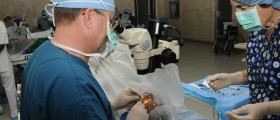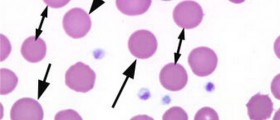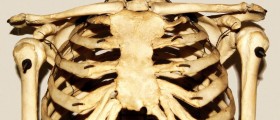
Definition of Galactosemia
Galactosemia is a metabolic hereditary type of disease whichis the subject of numerous studies because it is still considered to be rather mysterious. Those who suffer from galactosemia have little or nogalactose metabolizing enzymes, which results in numerous defects because thebody cannot metabolize the galactose and it builds up in the body all the wayup to toxic levels. Internalproduction of galactose has been known for being associated with problems andsymptoms such as female reproductive issues, neurological complications,cognitive problems, liver cirrhosis, renal failure, presenile development ofcataract and long term morbidity. Galactosemia is often confused with diabetes,but these two can easily be distinguished simply by certain screeningadvancements which allow for the determining of exact identities of the sugarsfound in the urine.
Definition of Cataract
For those who are not familiar with the term, cataract ismedical condition which can be easily characterized as an opacity in thecrystalline lens of the eye. The origin of the word itself can be traced backto the meanings such as waterfall or curtain of water. This is mainly due tothe fact that it gets developed because the water gets absorbed from the lens,making it swell and become slightly opaque.
It is not yet fully understoodwhat connects cataract to the medical condition called galactosemia. In casesof galactosemic cataracts the lens epithelial cells are affected by osmoticswelling. Once again, for those who do not know, osmosis is a process in whichthe water moves from the areas characterized by low particle concentration tothe areas characterized by a high particle concentration so that equilibriumcan be established. According to numerous researches, this osmosis occurs dueto abnormal amounts of electrolytes or metabolites accumulated in the lens. Oncethe concentration of galactitol gets increased in the lens, theconcentration of water gets increased too so it all creates a highly hypertonicenvironment. The osmotic movement of the water then can be held responsible forthe ruptured lens fibers. This is commonly referred to as the osmotic pressure.
There are three stages of the progression of cataract and these include the initialvacuolar stage, the late vacuolar stage and the nuclear cataract stage. Thethree stages are usually complete in a matter of 15 days. The changes in thehydration of the lens are usually the best indicators of each stage of the medicalcondition. The osmotic swelling and the galactitol accumulation are alsoaccompanied by certain changes in the epithelial cells. The levels of ATP andamino acids get reduced by up to 40 percent in some cases.
Types of Galactosemia and the Prevalence of Cataract Types
A presenile cataract which is also sometimes referred to asthe galactosemic cataract is the one which is commonly considered as one of theconsequences of galactosemia. This cataract occurs in GALK and GALT deficiency.GALK deficiency is actually galactokinase deficiency and it is an autosomalrecessive disease which is very rare. Those who suffer from it are known forhaving extreme levels of galactitol in the urine and blood when exposed todiets packed with galactose. This type of deficiency is the main cause of typeII galactosemia. GALT stands for galactose 1 phosphate uridyltransferase, andwhen a person suffers from a deficiency or impairment of this enzyme it leadsto the development of type I galactosemia, which is also sometimes referred toas classic galactosemia. The most common symptoms of this medical condition mayor may not include cataract, sepsis (which is a presence of toxins in the blood), muscle hypotonia (decreased strength and tone of the muscles), renaltubular dysfunction, hypoglycemia, hepatosplenomegaly (enlargement of the liverand the spleen) and jaundice. Some of these symptoms may be life-threatening.There is also a type III galactosemia which is triggered by a decreasedactivity in the third major enzyme of galactose metabolism, the one referredto as UDP galactose 4’ epimerase. This type of galactosemia is extremely rare,and it commonly occurs in the Japanese population.
Treatment
The first clinical symptoms of galactosemia after agalactose diet include enlargement of the liver, cataract, jaundice, hypotonia,lethargy, diarrhea and difficulty feeding. If the condition does not gettreated on time, it may lead certain serious complications such as reproductiveproblems, motor abnormalities, verbal dyspraxia and severe mental retardation,among others.
The top priority on the list of possible treatment options is thecomplete removal of galactose from the patient’s diet. All milk products needto be replaced by adequate alternatives made from soy. The same goes for thosewho suffer from galactosemic cataract, as this medical condition is actuallyone of the symptoms of galactosemia. Some cases may also involve the use of certain types of aldose reeducates inhibitors such as sorbinil and alrestatin.











-Causes,-Symptoms,-Diagnosis,-Treatment_f_280x120.jpg)




Your thoughts on this
Loading...